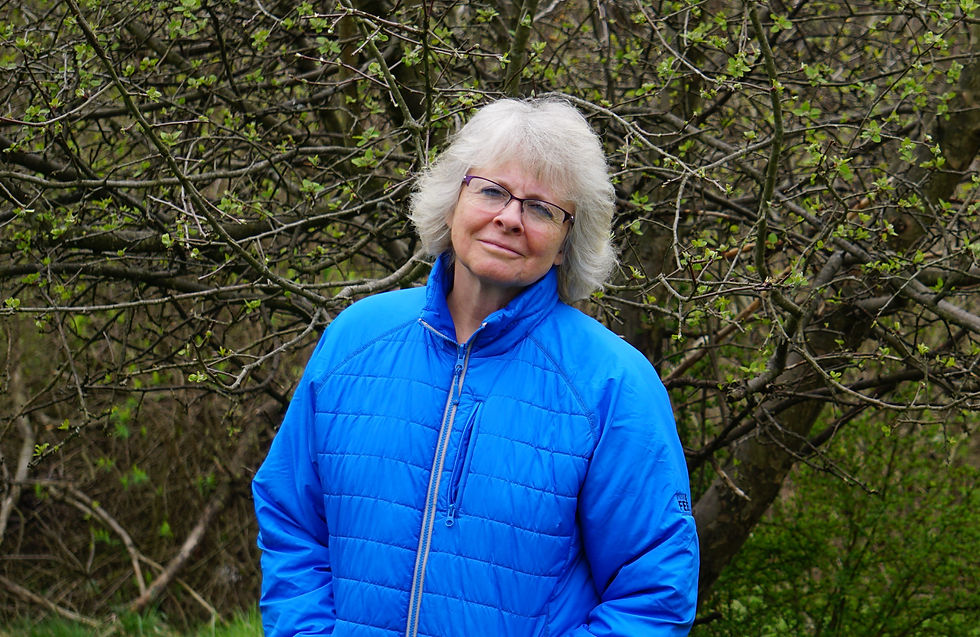I’m writing this in week four of the 2020 Covid-19 quarantine. Hair salons are closed, so women everywhere are fretting about their roots. Many have taken to box color to solve the problem. Have you ever considered going dye-free? There may never be a better time. That’s why I’m going to publish this post now. At first glance, it may seem to be a frivolous topic for these times, but I think it’s very relevant.
“My God, you’ve really gotten gray.”
I was in a meeting with a male coworker who was known for not having much of a filter. He actually said this to another female coworker who had stopped coloring her hair over a year prior. He was trying to be funny and get a rise out of her. It didn’t work. We just moved on with the meeting after the world’s most awkward pause and a moment of hurt.
At the time, I was still paying $85 every four weeks to make sure my roots never showed and that I didn’t look quite my age. (Plus $35 for a compact of touch-up color I used on my temples. I’m rolling my eyes at myself here.) Five weeks between salon appointments constituted living on the edge for me. It was a darn good color job for the money, but who was I kidding? I wasn’t a natural blonde. Hadn’t been since my 20’s. And I was tired of trying to be someone I wasn’t. It was two hours in the stylist’s chair every month, and I couldn’t get that time back.
That $85 ensured I wasn’t the object of this man’s misplaced attempt at a joke. So while I felt embarrassed for my coworker and angry at the comment, I was also relieved that it hadn’t been directed at me. Because the truth is ageism is alive and well in the workplace. And I would have withered.
Why did I get my hair colored so religiously? Because gray hair signified irrelevance. Because I sat in a lot of meetings with HR people who reminded us that we needed to show millennials in ads so that we didn’t attract people who were “over 50.” Those last two words were usually whispered because, well, you’re not supposed to say it like that. You’re also not supposed to refer to people as “dinosaurs,” but I heard plenty of people talked about that way. I suspect I was talked about that way too, no matter how often my stylist slapped color on my hair.
So when I made the decision to stop working in my field, I decided to stop coloring my hair. More than that, I decided to stop standing an arm’s length away from my real self and start making friends with her. Here’s how I did it.
Gray and Proud on Facebook—I started following a Facebook page called Gray and Proud, which was recommended by my stylist. It was enormously helpful. Photo after photo of women from 30 to 80 who had ditched the dye and were sharing their victories and struggles. It was a great way to get support and ideas on how to transition to your natural color.
The two-inch trim—I asked my stylist to take two inches off the length and the layers. It was a nice try, but it wasn’t enough. I needed to get there faster.


The Pinterest board—I searched pixie cuts and other short haircuts on Pinterest and got loads of ideas, which helped me to determine how much was too much to cut off.
The quasi-pixie—I went back to my stylist two weeks later with several photos from the Pinterest board, and she gave me a near-pixie cut. She said I would hate a full-on pixie.

Guess what? I hated the near-pixie cut just as much. Family and friends were nice about it, but I looked and felt ridiculous. The only thing I liked about the weird pixie was the roots. I wanted to pull on my hair to make it grow faster, like those dolls we had when we were kids. So I took the next step.
Patience—I accepted the fact that time was the only remedy. I let my hair grow back to its normal length. It took six months, lots of staying in the moment and two trims to remove most of the remaining permanent color.
Last week, I trimmed my bangs, removing the last bit of blonde. When the quarantine is over and America’s mad rush to get to the salon has quieted, I’ll get the rest of the blonde trimmed off.

Once I grew out the varnish, I discovered that my hair is many colors: dark blonde, light blonde, gray and white. For me they are the colors of authenticity, something I really needed in my life.

Should you go dye-free? I’m going to be very honest here. If coloring your hair makes you happy, keep on doing it and be fabulous. If you are still working and you feel the least bit concerned about your image and ageism in the workplace, I say keep coloring your hair. Because, like it or not, women are still judged by it, both subtly and not so subtly. The world is not as evolved as we’d like it to be. But if you have considered it and feel a desire to be free of hair color, try it. Going gray is as much an attitude as a process of transitioning to your natural colors. An attitude of ease and contentment. Boldness and truth.
Oh, you know the guy who made the rude comment to my coworker? He was mostly gray. Go figure.
Comments